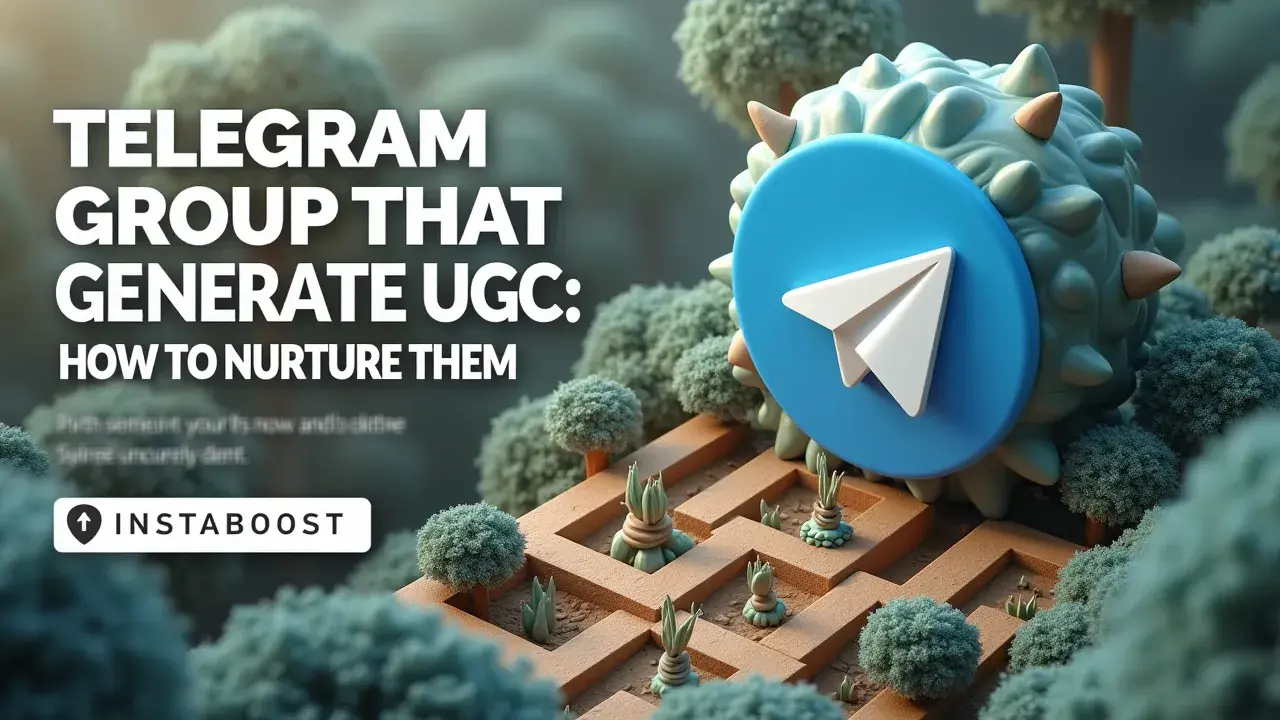How To Nurture Telegram Group Members Who Generate UGC?
Encouraging user-generated content in Telegram groups starts with clear prompts and visible appreciation for contributions. Members respond when topics are specific, guidelines are simple, and feedback loops reward creativity without overwhelming rules. Risks like off-topic posts or low-quality submissions exist, but setting themes, pinning examples, and rotating spotlights keeps quality rising. Aim for consistent prompts and lightweight moderation to build a dependable stream of relevant, creative community contributions.
Why User-Generated Content Is the Lifeblood of Telegram Groups
A Telegram group might look impressive if it’s got thousands of members, but that number doesn’t say much about what’s actually going on inside. What seems to matter more is whether people are willing to speak up – sharing ideas, asking questions, or just posting something they’ve made or found. That kind of back-and-forth – actual posts, replies, even a random meme – ends up giving a group its voice and makes it feel like a place people can join in. If you’re running a group or trying to help one along, just watching the member count rise isn’t really the point. The tricky part is figuring out how to get people to actually talk, even just a little.
Groups that manage to get a few people to share usually see others join in, and it starts to feel like somewhere you might want to check back in on. Lately, admins seem to care less about how many people are signed up and more about whether anyone’s saying anything at all. That makes sense, especially now that most people are kind of worn out by one-way announcements or another round of brand updates. Posts from actual members just feel more relevant, and it’s easy to notice when replies come from someone who’s been around for a while. There’s a lot of talk now about community management – people trading tips or pointing out their favorite telegram growth solutions – but everything seems to come back to this point: activity counts for more than just numbers.
Of course, getting people to share isn’t as simple as telling them to do it or setting up a reminder. It’s more about making space for different kinds of posts, being clear about what fits, and sometimes recognizing people when they jump in – whether that’s a bit of feedback, a thank you, or something else. Whatever the focus – whether it’s a hobby or a small business group – figuring out how to keep some kind of real conversation going is what seems to hold it all together. Otherwise, it’s easy for a busy-looking group to just go quiet, no matter how many people are signed up.

Why Most Telegram Groups Struggle With Real Engagement
It’s tempting to think that having more people in a group will automatically make it more active – like, more members should mean more posts and more back-and-forth. But that’s not usually what happens. Getting people to actually talk and take part takes some effort. The small things seem to matter more than you’d expect: whether newcomers get a real welcome, if someone bothers to reply when people post, or if the group rules make it easier for people to fit in. People notice if nobody responds to what they share, or if it looks like only a few regulars are really included in the conversation.
Sometimes, even after a huge boost in Telegram members, there are just more people watching and not much in the way of new voices. The groups where people actually talk aren’t just lucky; the admins are paying attention – thinking about whether their questions are easy to answer, whether people get some kind of response, whether new folks ever get to say anything.
Little details like that end up shaping whether someone feels like joining in or just stays quiet. If you want a group where people actually talk to each other, it’s not just about the numbers. It’s more about what it’s like to show up and post something for the first time, and whether you get the sense anyone will care.
Little details like that end up shaping whether someone feels like joining in or just stays quiet. If you want a group where people actually talk to each other, it’s not just about the numbers. It’s more about what it’s like to show up and post something for the first time, and whether you get the sense anyone will care.
Designing Systems That Turn Lurkers Into Creators
You don’t really have to keep up with every new trend; what matters is whether your Telegram group actually gets some real momentum. The groups where people genuinely talk aren’t always the loudest or chasing whatever’s next. What helps is putting in a few simple things so people go from just watching to actually saying something. It could be as basic as prompts, weekly threads, or pinning a list of starter topics at the top – anything to make it easier for quieter people to join in. The rules should just make sense and support people, not make them worry if their message is “good enough.” It goes a long way if you find small ways to notice when someone participates, like pinning a thoughtful reply, tagging someone to say thanks, or calling out a good post in the group description.
Even little gestures like that can matter more than you expect. And sometimes, things like bulk telegram views really do end up mattering less than just making sure people feel noticed. Over time, it’s the steady routines that seem to count more than adding something new every week. Stuff like “Share Your Work Wednesdays” or rotating a spotlight can keep things moving, but not in a pushy way.
It’s often the regular habits – even if they seem kind of ordinary – that make the place feel comfortable. Gradually, if you let things play out and pay attention, the group starts to take on its own character, shaped more by what people bring than by admin plans. That’s the kind of steady growth brands like INSTABOOST pay attention to, because it actually seems to last...
When “Community” Isn’t Worth Saving
I didn’t put much effort into turning things around; I just shut it down. After a while, all the tweaks I made in my Telegram group – changing the rules, adding more polls, tagging people who never replied – felt routine, like I was just doing them to do something, not because they’d actually help. Some groups never really turn into busy, chatty places. Sometimes they’re quiet from the start. Maybe the group was only meant for updates and people just got used to not talking, or maybe the first few members set that tone by not saying much. Even adding things like telegram post reactions didn’t really get people more involved.
When it starts to feel like you’re forcing it and nothing really changes, starting over doesn’t seem like giving up. I’ve seen other admins keep old groups going long after people have lost interest, hoping that another event or a new bot will somehow get things going again. But when no one’s paying attention anymore, small changes don’t add up to much.
The groups that worked best, at least from what I’ve seen, were the ones that started over. They were smaller, more focused, and everyone seemed to understand the point. People joined in without needing encouragement. If you want a place where people actually talk, sometimes you have to close the old group, think about what didn’t work, and just try again with a clearer idea. It’s tough to walk away from something you spent time on, but you can’t really force a group to come to life if it isn’t set up for it.















